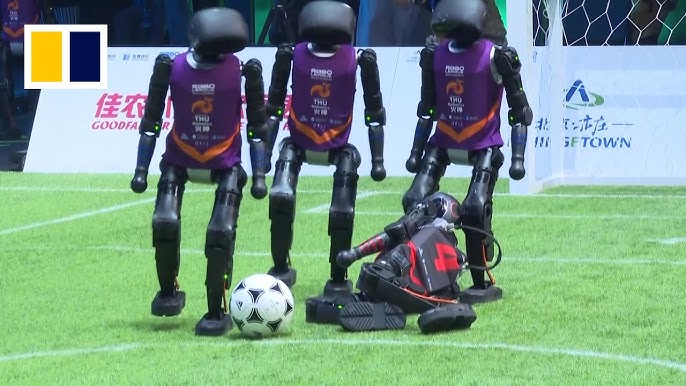Historic Match in Beijing
China recently hosted its first-ever fully autonomous AI robot football match in Beijing—a three-on-three humanoid robot tournament held on an artificial pitch. This event marked a significant milestone in global robot sports, paving the way for future human-robot interactions on the field.
Teams and Technology
Four university teams participated, each fielding humanoid robots powered by custom AI algorithms responsible for perception, navigation, decision-making, and teamwork. Robots were equipped with visual sensors and fall-recovery systems, enabling them to identify the ball, move autonomously, and get back on their feet after tumbles.
Highlights and Hurdles
Gameplay was far from smooth. Robots frequently stumbled, collided, and even required stretcher assistance—an unexpected and human-like twist in the competition. Despite these glitches, they demonstrated crucial movements like kicking, passing, and goal celebrations. Some even raised their arms to celebrate goals—a programmed gesture that brought real charm to the pitch.
Final Score and Standout Teams
In the thrilling final, Tsinghua University’s THU Robotics triumphed over China Agricultural University’s Mountain Sea team with a score of 5–3. Spectators praised the technical sophistication of both finalists, emphasizing the intense early-stage competitiveness and collaborative play.
Broader Vision and Implications
The tournament, sponsored by Booster Robotics, serves as a testing ground for advanced AI in real-world settings. Cheng Hao, Booster’s CEO, emphasized the need for safety testing, as the ultimate goal is to stage matches where robots and humans can safely interact. This tournament also serves as a precursor to the upcoming World Humanoid Robot Games in Beijing this August.
Road Ahead: From Robots to Real Fields
While robots currently lag behind human athletes, this match sets a clear path forward:
- Improving stability and coordination to reduce tumbles and accidents
- Advancing AI decision-making for more fluid, responsive tactics
- Building public trust in humanoid robot safety through transparent demonstrations
- Preparing for mixed-format events where robots and humans might play together in future exhibitions
Final Take
China’s AI football match highlights a bold leap in robotics. From clumsy kickoffs to celebratory goals, the event showcased both the technology’s promise and its current limits. As robotic form meets athletic function, these games will be watched closely—by both engineers and sports fans—eager to see when machines finally step up to the goal… and maybe one day beat us at our own game.










